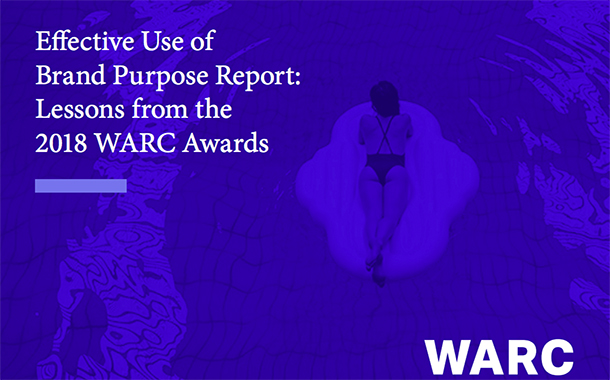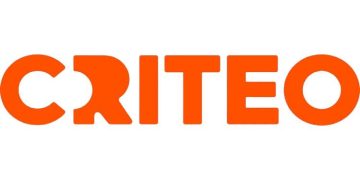WARC, the global authority on advertising and media effectiveness, has today released its Effective Use of Brand Purpose Report 2018, outlining successful key trends when using brand purpose in marketing strategies.

Based on an analysis of the winners of the Effective Use of Brand Purpose category of this year’s international WARC Awards, a global search for next-generation marketing effectiveness, the report identifies common themes from marketing initiatives that have successfully embraced a brand purpose and achieved commercial success as well as a benefit for a wider community.

Jury chair, Claudia Willvonseder, Chief Marketing Officer, IKEA, comments: “In 2018 so far, I have heard ‘purpose’being discussed more often than‘positioning’ in marketing circles. Iexpect that, in the future, this yearwill be seen as the tipping point when purpose went mainstream.”
She added: “Purpose, product and profit have a symbiotic relationship: they work together. There are more than enough studies now available that show how strong, purposeful brands enjoy positive results, not just interms of profit, but also in terms of positive impact on the world.”
Following WARC’s analysis of the metadata of the entries, together with an entrants’survey and contributions from the esteemed judging panel, four key themes have been identified around the Effective Use of Brand Purpose:
- Purpose needs participation

Some of the top-performing initiatives were designed with people’s participation in mind, including Grand Prix-winner Body form/Libresse, which increased its share of voice in the feminine hygiene sector through having its message amplified by a vocal community supporting the brand’s boldness.
Judge Jo Arden, chief Strategy Office, MullenLowe Group UK says: “The intersection of purpose and participation is a powerful one which has been under-explored.There is a new mood in purpose-driven communications which is more confident, committed and clear-sighted.”
- Exercise caution with ‘empowerment’ campaigns

While campaigns that endeavour to‘empower’ women are undoubtedly prompted by the very best intentions,this route is now becoming well-trodden and differentiation is a challenge. Many judges agreed that female empowerment campaigns are now becoming so common that, in the words of Govind Pandey, CEO, TBWA\India: “Every brand is now trying to do something for women – they all blend into each other.”
Winning campaigns that took a more original approach included Microsoft’s #MakeWhatsNext in STEM, a pleafor US high-school girls to stick with STEM subjects, and Grand Prix-winner Body form/Libresse with its#bloodnormal campaign.
- Purpose that demonstrates dual impact

Purpose marketing is still under attack from many quarters of the industry, so case studies that could demonstrate ‘dual impact’ – a clear commercial benefit as well as a societal benefit – are crucialin proving that brand purpose is a sustainable business strategy.
“Apurpose-led brand should benefit society in a way that is also of commercial benefit to the business,” says judge Dan Izbicki, Founder, Ethos. Winning papers that demonstrated this dual impact included Heineken-owned beer Tecate in Mexico, which grew its brand value and substantially increased calls to an NGO helping victims of domestic abuse.
- TV is a popular channel choice for purpose

The reach and capacity for emotion offered by TV is still crucial in establishing purposeful campaigns. As judge Jem Fawcus, Owner and Group CEO, Firefish comments: “purpose-led campaigns from brands including Guinness inthe UK and Vaseline in the US used TV to pack an emotional punch and, incidentally, listed ‘emotion’ astheir main creative strategy.”
While online video and social media played important supporting roles in the media mix, there was no denying thatTV remains the preferred channel for brands looking to establish a purposeful position.
Now in their third year, the WARC Awards 2019 are open for entries. The deadline for submissions is 19 February 2019. Free to enter, there is a $40,000 prize fund for the winning papers.


















